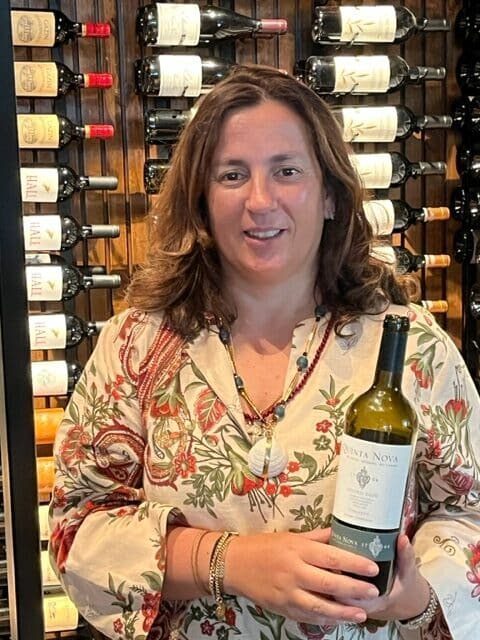The Amorim family has been intimately connected to the world of wine since 1870 when they first started producing cork enclosures for the Port wine cellars in Vila Nova de Gaia. More than 150 years later, they have become one of the most influential wine families now also owning a historic winery that dates to the Romans.
The Winery History
The story of the Taboadella Winery is tracked back to 1255 when it served as a Villae, an upper rural class estate that consisted of a main house, a wine cellar, and other various supporting structures as well as vines planted on the site. In 1999, the Amorim family planted new vines and built a winery.
Taboadella Winery is in Castenda in the Taboadela Valley, a subregion of the Dão region of Portugal. I’ve only scratched the surface of regions in Portugal including Dão in 2020 as well as the neighboring Alentejo in 2019. The Dão region is surrounded by 5 mountain ranges, produces 5 different soils, and is located about 90 minutes to the Southeast of Portugal. It is between 200 meters to 1,000 meters above sea level in the Serra da Estrela, the high mountain range to the south and east of the region.

The winery consists of 42 hectares of vines between the coast and the mountains resulting in a unique climate and soils with different elevations and altitudes. They produce a wide range of red, white, and rosé wines, which are dry-farmed, picked, and sorted simultaneously with a table allocated in the winery for each. Portugal has more than 250 grapes many of which are indigenous to the country.
The Taboadella Winery is also committed to sustainable practices and social responsibility. The winery is certified organic and uses renewable energy sources to power its operations.

The winery is a family-owned and operated business that is dedicated to producing high-quality wines. It has received the International Wineries for Climate Action (IWCA) designation, a non-profit collaborative working group of environmentally committed wineries taking a science-based approach to reducing carbon emissions across the wine industry.
Since 1999, the fourth generation of the family has been involved in wine. I had a chance to meet with Winemaker Luísa Amorim who talked about Portugal’s history and place in the wine world for producing great wines in the Dão and Douro. We also had a chance to try two of their other wine brands Quinta Nova de Nossa Senhora do Carmo and Aldeia de Cima.
The Quinta Nova de Nossa Senhora do Carmo Winery has a legacy going back 200 years. Owned by the Portuguese Royal Family until 1725, it became a “new estate” when two existing estates were merged into a larger property.
The Herdade da Aldeia de Cima Winery is in the Serra do Mendro mountain range in the Alentejo region of Portugal. The region has a long history of winemaking, dating to the Phoenicians in the 1st millennium BC. It was acquired by the Amorim family in 1994 and the first release with Luisa at the helm was in 2005.
It was interesting how different those wines were. “We have a different philosophy at each place because grapes don’t have the same soil. We are like a chef trying to maintain the classic character of the dish while using our sensibilities to make the best blend,” Luisa said.
The wineries are using all the current technologies and tools available – concrete, different vat sizes, and different ways of aging wines from concrete to barrels. But lots of old-school methods like manual harvesting are still used.
I tried three wines – one from each property.

2021 Taboadella 1255 Villae — a blend of Bical, Encruzado, and Cerceal Branco grapes from the Dão region of Portugal. I tasted notes of citrus, stone fruit, and apricot. It was the perfect Texas patio wine.

2020 Herdade Aldeia De Cima Reserva — a blend of Touriga Nacional, Alicante Bouschet, and Syrah grapes. I tasted notes of blackberries, cassis, earth, and spices. It was a well-balanced wine that could age well and become more complex.

2020 Quinta Nora — blend of Touriga Nacional, Tinta Roriz, and Tinta Barroca grapes. I tasted blackberries, black currant, spice, and earth. This was a great lesson on what the region could do as oak was a popular approach at the time. When the family owns a cork business, it can look at overall wine trends and innovate.
As Luisa said, “Since we have the cork business, we have a global wine perspective and that encouraged us to do so.” It’s bold. It’s Portugal. And it’s a family committed to putting its stamp on the wider world of wine.



